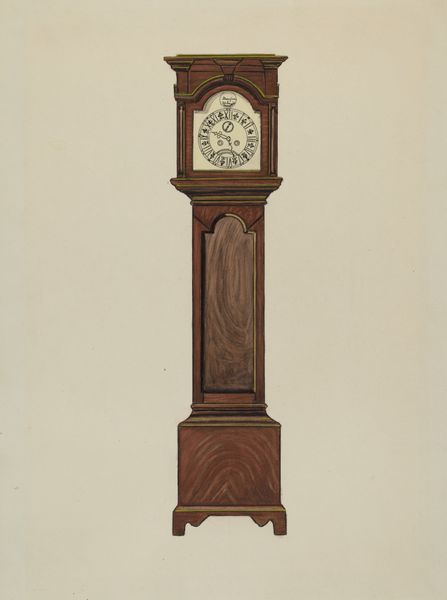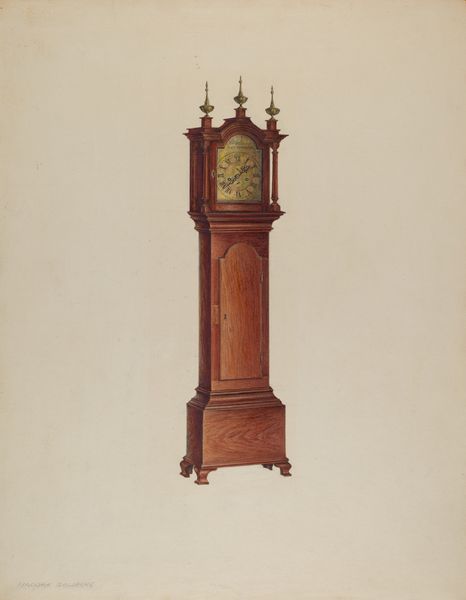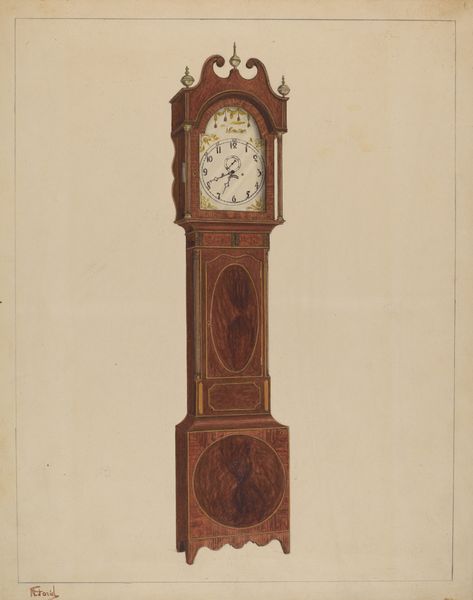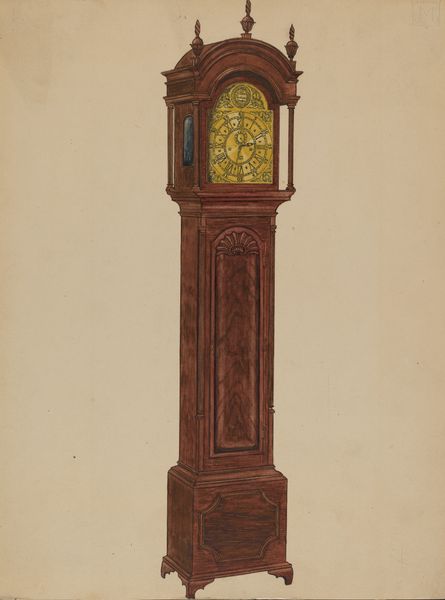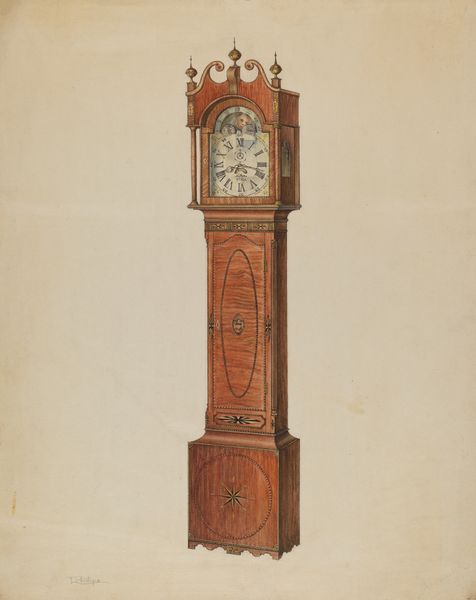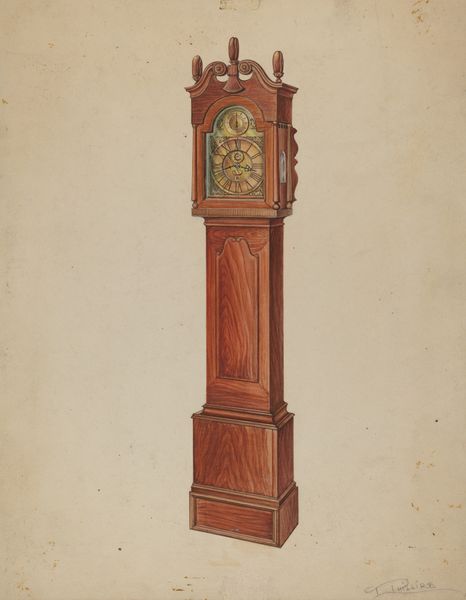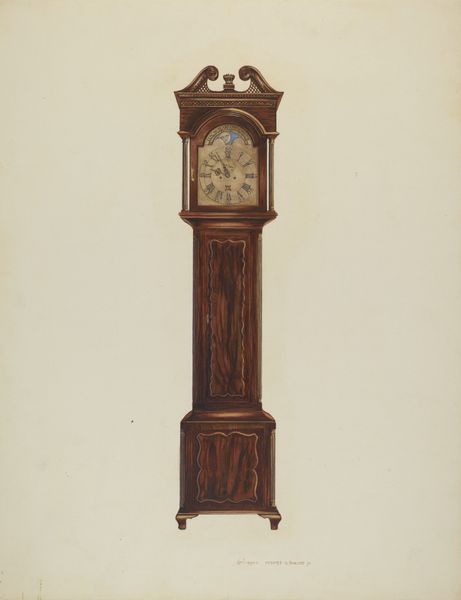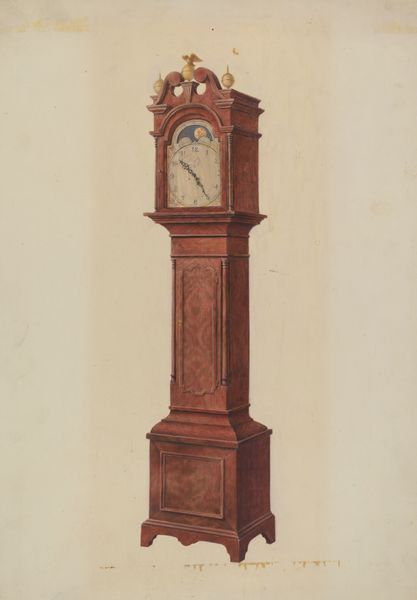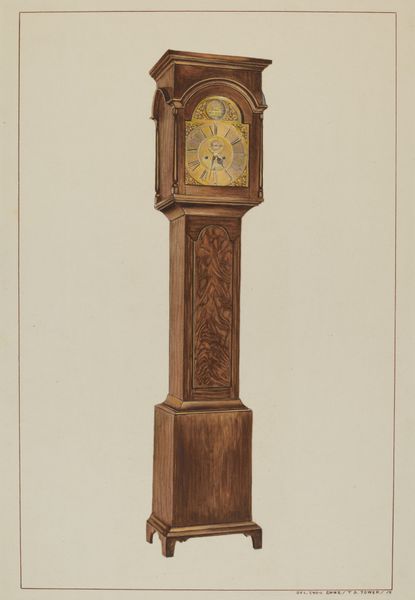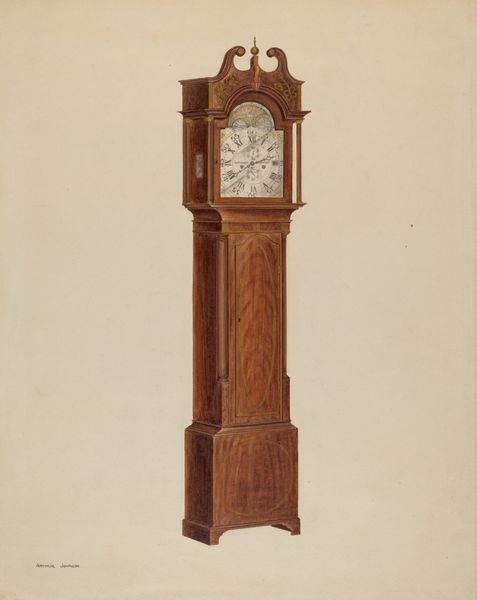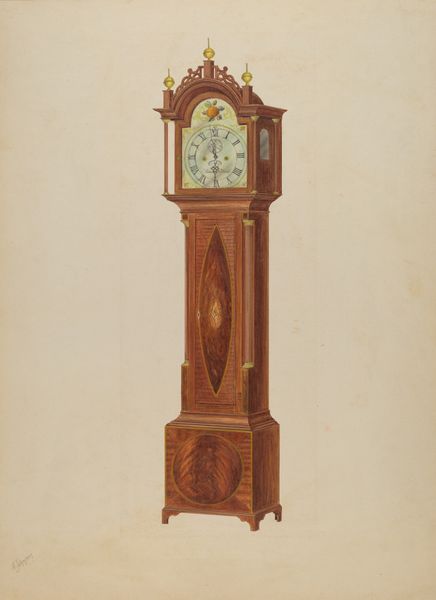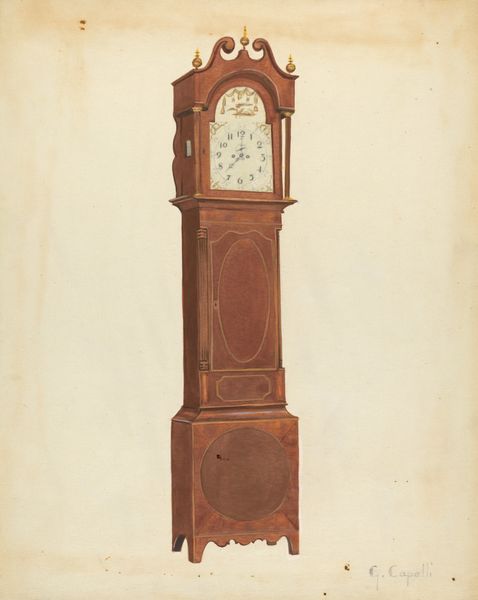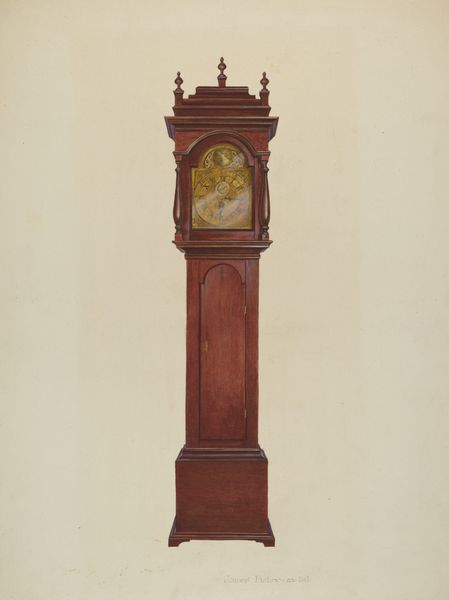
drawing, painting, watercolor
#
drawing
#
water colours
#
painting
#
watercolor
#
realism
Dimensions: overall: 28 x 22.7 cm (11 x 8 15/16 in.) Original IAD Object: 7'high; 19"wide; 10"deep
Copyright: National Gallery of Art: CC0 1.0
Curator: We’re looking at Frederick Jackson's watercolor painting, "Grandfather's Clock," created around 1937. Editor: Immediately, I'm struck by the deliberate verticality and warm monochromatic color scheme. It creates a somewhat comforting yet slightly unsettling presence. Curator: I think understanding the context illuminates that feeling. Jackson, like many artists of his time, was employed by the WPA Federal Art Project during the Great Depression. These artists were tasked with documenting American design, culture, and craft, from furniture to tools, recording this history but also putting people to work. Editor: Yes, you're right; the simplicity almost seems designed to catalog efficiently and accurately. The almost geometrical elements remind one of early formalism’s reductive quality as well. The golden decorative elements at the top provide a focal point in tension with the rich brown tonalities. Curator: Right, consider the labor involved, both in the clock's construction and Jackson's meticulous depiction of it. This wasn't high art in the traditional sense, but skilled craftspeople like cabinet makers played a crucial role in American material culture. These artists in the WPA served as documentarians. Editor: Certainly. It seems less interested in artistic expression and more interested in capturing the formal essence of the object, the structure holding time itself. You know it's really that strange inscription that grabs me as well: "Aaron Willard Roxbury". Curator: Exactly, that inscription speaks to the historical value being captured and passed on, in this instance referencing Aaron Willard, the famous clock maker from Roxbury, MA, which then becomes part of the social framework. What did this specific clock represent in a specific domestic space? What did such objects represent when the world faced tremendous change? Editor: Very good points, to be sure. Seeing this rendered in watercolor only amplifies the sentiment. It almost invites contemplation on the passage of time itself—time's fleeting beauty juxtaposed with an object designed for temporal consistency. Curator: Ultimately, looking at an unassuming piece like Jackson's work helps remind us how ordinary objects contain history, memory, and labor that is so much more interesting. Editor: I would simply suggest taking some time to truly examine Jackson's attention to details here. There’s value to seeing beyond just the labor implications as such.
Comments
No comments
Be the first to comment and join the conversation on the ultimate creative platform.
